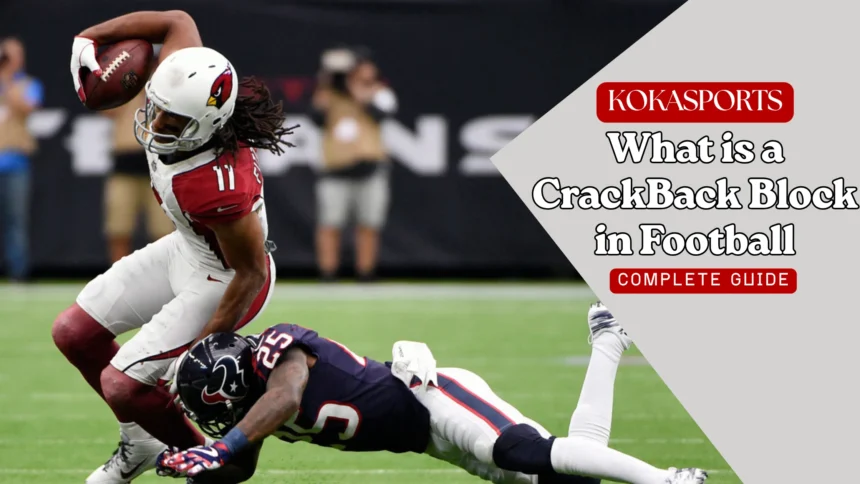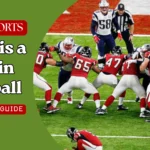Football is a physical sport filled with various blocking techniques, but few generate as much controversy and concern as the crackback block in football. This particular type of block has evolved from a common offensive strategy to one of the most heavily regulated maneuvers in American football. Understanding what is a crackback block in football is essential for players, coaches, and fans who want to grasp the game’s safety rules and strategic elements.
Crackback blocks, along with blindside blocks and illegal crackback blocks, represent major safety concerns that have prompted significant rule changes across the NFL, NCAA, and high school football leagues. These blocks put defensive players at serious risk of injury, particularly when executed improperly or in vulnerable situations.
In this comprehensive guide, you’ll learn the crackback block definition, explore the rules governing legal and illegal crackback maneuvers, examine notable examples including the CeeDee Lamb crackback block incident, understand the penalties involved, and discover why modern football has placed such strict limitations on this once-common blocking technique. Whether you’re asking “what’s a crackback block” or trying to understand the NFL crackback block rule, this article will provide clear, detailed answers.
What Is a Crackback Block in Football?
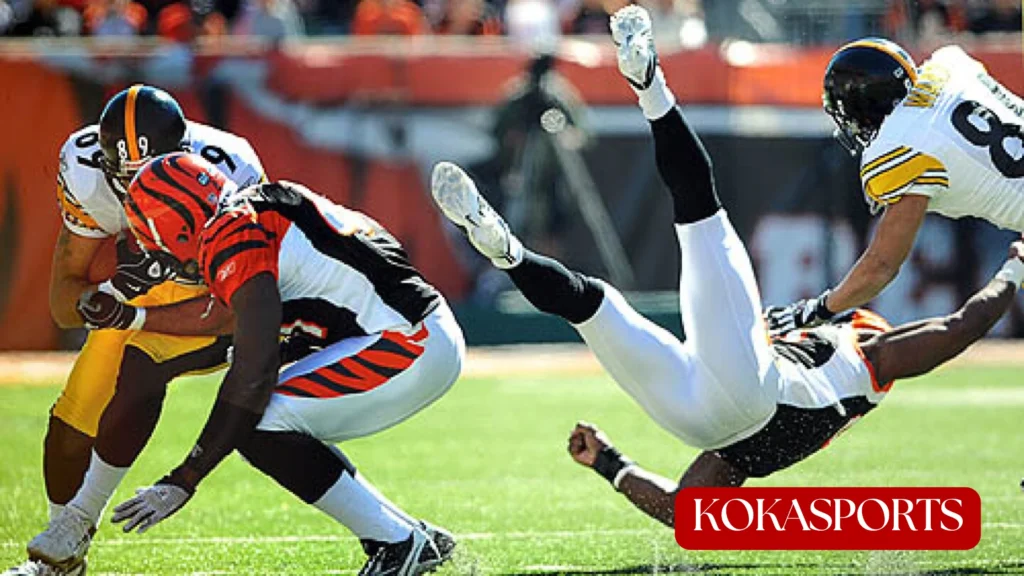
A crackback block is a blocking technique where an offensive player, typically positioned outside the tackle box, moves back toward the middle of the field to block a defender who is pursuing the ball carrier. In simple terms, it’s when a wide receiver or tight end who starts wide comes back inside to hit a defensive player from the side.
The definition of a crackback block centers on three key elements: the blocker’s starting position (outside), the direction of movement (coming back inside), and the target (a defender moving parallel to or away from the line of scrimmage).
Origins and Basic Mechanics
The crackback emerged as teams sought creative ways to create running lanes. By having receivers positioned wide come back to block pursuing linebackers or safeties, offenses could “seal off” the inside and give running backs more space. The blocker would read the defensive flow and time their movement to meet the defender at the perfect moment.
During a crackback block, the offensive player releases from their wide position once the ball is snapped, angles back toward the formation’s center to block a defender who’s focused on the ball carrier. This creates a dangerous scenario because the defensive player often doesn’t see the hit coming, making it similar to a blindside block.
Famous Examples
The CeeDee Lamb crackback block incident brought renewed attention to these rules. High-profile players throughout NFL history have been involved in controversial crackback situations that have shaped how leagues enforce these regulations today.
Read Also: Football Gaps and Holes: Gap Alignment, Offensive Block Strategies, and Defensive Line Play
The Definition of a Crackback Block Explained
According to the NFL crackback block rule, a crackback occurs when a player who is aligned more than two yards outside the tackle box, or a player in motion at the snap from an outside position, blocks a defensive player inside the opponent’s tackle box. The key distinction is the blocker‘s starting position and the location where contact with the defender occurs.
The crackback block definition according to NCAA rules is similar but includes specific restrictions about blocking below certain levels. Both leagues focus on protecting defenders from dangerous hits they cannot anticipate.
Who Performs Crackback Blocks?
Typically, a wide receiver or tight end executes these blocks. Slot receivers are particularly common perpetrators because they’re positioned between the offensive linemen and outside receivers, giving them the perfect angle to come back inside. These players must understand the boundary between a legal block and an illegal crackback block to avoid costly penalties.
The role of motion and timing is critical. If a receiver goes in motion before the snap, their positioning affects whether subsequent blocking is considered a crackback. Proper technique requires the blocker to engage from the front or side, never targeting the head or neck area of the defender.
Why the Crackback Block Was Created
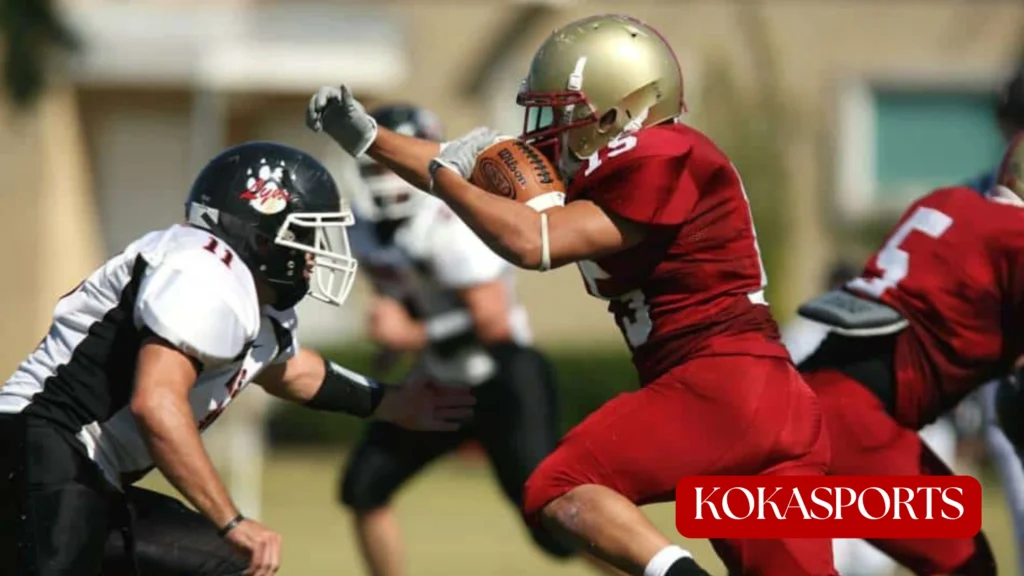
The strategic purpose of the crackback in football crackback block schemes is to exploit defensive pursuit angles. When a running play develops to one side, defenders flow that direction. A receiver coming from the opposite side can catch these pursuing players off-guard, creating devastating blocks that open significant running lanes.
This technique differs from other blocks:
- Cut block: A low block targeting the legs
- Peel-back block: When a blocker moves toward their own end zone to engage a defender
- Chop block: An illegal combination block at different levels
- Crack block: A similar term sometimes used interchangeably
The crack back block helped offenses neutralize faster, more athletic defenders who could pursue ball carriers sideline-to-sideline. Before strict regulations, successful crackbacks were celebrated as smart football plays that demonstrated awareness and timing.
When a Crackback Block Becomes an Illegal Crackback Block
An illegal crackback block occurs when the block violates specific safety restrictions designed to protect defensive players. The block is illegal when:
- The blocker initiates contact block below the waist
- Contact is made to the head or neck region
- The block occurs outside designated zones
- The offensive player targets a defenseless defender
What is an illegal crackback block by modern standards? The waist is illegal as a target when the block comes from certain angles or positions. Specifically, crackback blocks that target defensive players below the waist from outside positions are prohibited to prevent knee and leg injuries.
Safety Concerns Behind the Rule
The primary safety concern is that defenders pursuing the play cannot see the blocker approaching from the side or behind. These blind side hits can cause serious injuries including concussions, neck injuries, and torn ligaments. The illegal blindside nature of many crackbacks prompted leagues to prioritize player safety over offensive strategy.
What is an illegal crackback block by offense? It’s when the attacking team’s blocker violates positional, contact point, or force restrictions designed to give defensive players a fair chance to protect themselves.
The NFL Crackback Block Rule Explained
The current NFL crackback block rule states that a player who is more than two yards outside the tackle box when the ball is snapped, or any player in motion from outside, cannot block an opponent below the waist if they move toward the position where the ball was snapped.
Key provisions of the NFL crackback block regulations include:
| Rule Element | Description |
|---|---|
| Starting Position | More than 2 yards outside the tackle box |
| Prohibited Contact | Below the waist, to head or neck area |
| Location Restriction | Inside opponent’s tackle box |
| Penalty | 15-yard penalty plus potential fines |
Changes over time have made the nfl crackback block increasingly restricted. The new rule modifications emphasize player safety rules by expanding what constitutes an illegal blindside block and increasing penalties for violations.
High-Profile Penalties
Illegal crackback block NFL penalties have been assessed to star players, leading to fines and sometimes suspensions. The CeeDee Lamb crackback block incident exemplified how even skilled receivers can misjudge the legality of their blocking technique under pressure. These situations demonstrate how referees must make split-second decisions about whether a block is a block within legal parameters.
NCAA Crackback Block Rule — College Football Regulations
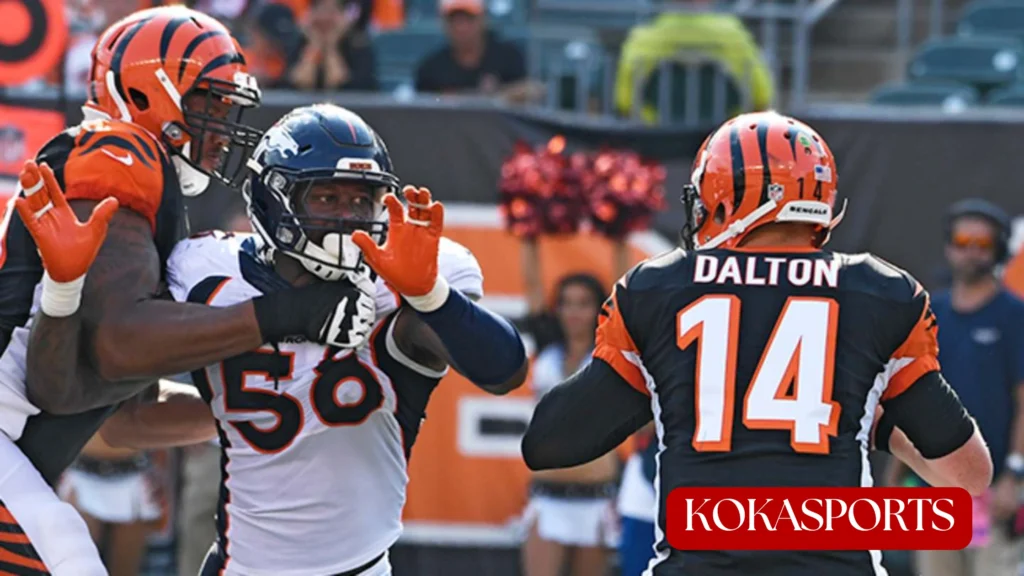
The NCAA crackback block rule takes an even more protective stance than the NFL. College football prohibits players from blocking below the waist when they’re more than yards of the tackle box away from their original position. This ncaa crackback block rule aims to reduce injuries among younger, developing players.
Differences between professional and college rules include stricter definitions of the tackle box, more conservative interpretations of legal block techniques, and enhanced emphasis on protecting defensive players who are engaged with other blockers.
The Difference Between a Crackback Block and a Blindside Block
A blindside block occurs when a blocker approaches a defender from the side or behind, striking them in a way they cannot anticipate. The blindside nature creates extreme danger because the defensive player cannot brace for impact.
The crackback motion often creates a blindside block scenario because the blocker approaches from outside while the defender focuses on the backfield. However, not all crackbacks are blindside hits, and not all blindside blocks are crackbacks.
Key Distinctions
Crackback block vs blindside block comparison:
- Crackback: Specifically involves movement from outside back inside the formation
- Blindside: Any block where the defender cannot see the approaching blocker
- Overlap: Many crackbacks create blindside situations, triggering both rules
When a blindside block violates force or contact point restrictions, officials will penalize the play regardless of whether it technically meets the crackback block definition.
Why Crackback Blocks Are Dangerous
The physics of high-speed collisions make crack back blocks particularly hazardous. When a defender moving at full speed gets hit from the side by a blocker they don’t see, the force can cause catastrophic injuries. Common injuries from illegal crackback hits include:
- Concussions from head impacts
- Neck injuries from awkward contact angles
- ACL tears when blocks occur block below the waist
- Rib and shoulder damage from unprotected impacts
Modern rules protect defenders by requiring blockers to engage from visible angles using legal contact points. League initiatives include enhanced training for officials, stricter enforcement, and educational programs teaching safer blocking fundamentals. The emphasis on player safety has fundamentally changed how the block in football is taught at all levels of American football.
Penalties for an Illegal Crackback Block in Football
The standard penalty for an illegal crackback is a 15-yard penalty assessed from the spot of the foul. However, consequences extend beyond yardage:
- Fines: NFL players can be fined thousands of dollars
- Suspensions: Repeat offenders or egregious violations may result in game suspensions
- Automatic First Down: If committed by the defense (rare scenarios)
- Loss of Down: If the foul negates a scoring play
Referees identify illegal blocks in real-time by watching the blocker‘s approach angle, contact point, and whether the defender had opportunity to defend themselves. The block is when an offensive player violates positional or contact restrictions, triggering immediate flags.
Key Takeaways: What Every Player Should Know
Understanding the crackback block is essential for anyone involved in football. Here are the critical points:
- A crackback involves an outside the tackle box player moving inside to block a defender
- Blocks that target defensive players below the waist or to the neck area are illegal
- The rule protects defensive players from dangerous blind side hits
- Violations result in significant yardage penalties and potential fines
- Both NFL and NCAA have strict player safety rules governing these blocks
Players must learn to execute blocks safely and legally. The lineman and skill position players need different techniques, but all must prioritize avoiding hits that could cause serious harm.
Conclusion :The Legacy of the Crackback Block in Football
The football crackback block represents football’s ongoing struggle to balance physicality with safety. While crack-back blocks once were celebrated for their effectiveness, modern understanding of head injuries and long-term player health has rightfully led to restrictions on this dangerous technique.
Today’s crackback block rule demonstrates how the sport evolves based on medical evidence and safety priorities. From high school football through the professional ranks, leagues continue refining rules to protect players while preserving the game’s competitive essence. Understanding what is a crackback block in football helps everyone appreciate these safety measures and their importance in protecting the athletes who make the sport possible.
FAQs
What is a crack back block?
A block where an outside offensive player moves back inside to hit a defender pursuing the play.
Are crackback blocks illegal?
Legal if above the waist from the front/side; illegal if below the waist or to the head/neck.
What does “crack back” mean in football?
An outside player moving back inside to block a defender.
How to crack a block in football?
Approach from the front/side, contact above the waist, avoid the head and neck area.

